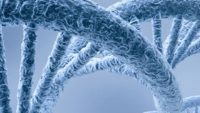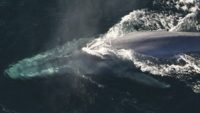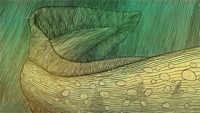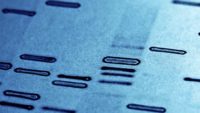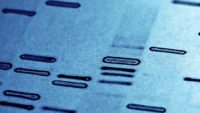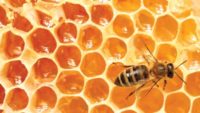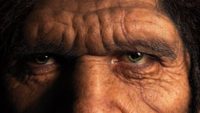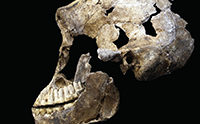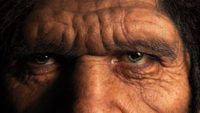By Ken Ham Well, it seems scientists have done it. They’ve discovered an ingredient needed for the evolution of life around distant stars! Now all they need is a planet just the right distance from just the right star with just the right environment (and of course all the rest of the ingredients for life, including an information and language system)—and then they’ll have life! Of course, I write this tongue in cheek. Scientists are no closer to discovering a naturalistic mechanism for the origin of life (here on earth or elsewhere in the cosmos) than they were before this [More]
On various continents, escarpments stand as a testimony to enormous geological forces. …read more Source: creation.com
Finding Adam in the Genome: Part 2 of a Response to Chapter 2 (and Chapter 4) of Adam and the Genome
By Dr. Nathaniel T. Jeanson In our series, we’ve discovered ample support that evolutionists fit facts to conclusions. In this article, we’ll continue to explore whether it is true. …read more Read more here: AIG Daily
The receding waters of Noah’s Flood better explain what shaped geological features such as mountains, valleys and rivers. …read more Read more here: creation.com
By Karin Viet What is the largest animal of all time—even larger than the most massive dinosaurs? The answer is the blue whale. …read more Read more here: AIG Daily
Animals used to be vegetarian, and they will be again. Should we feed animals a vegetarian diet now? …read more Read more here: creation.com
It’s true that cats have an uncanny ability to land on their feet. But that doesn’t make them invulnerable. …read more Source: creation.com
By Dr. Neal Doran In 1955, an amateur fossil hunter found a bizarre fossil in Illinois. To this day, the exact nature of this monster remains a mystery. …read more Source: AIG Daily
Finding Adam in the Genome: Part 1 of a Response to Chapter 2 (and Chapter 4) of Adam and the Genome
By Dr. Nathaniel T. Jeanson In this post, we begin exploring Venema’s evidences in chapter two of Adam and the Genome, titled “Genomes as Language, Genomes as Books.” …read more Source: AIG Daily
In June, 2017, thousands of scientists from around the world attended the 65th Annual Conference of the American Society for Mass Spectrometry in Indianapolis. One of the thousands of research projects on display at this year’s conference compared portable man-made sniffers to dog noses. Whose design won? More… …read more Source: icr.org
Caught in the middle of a meal, this fossil clearly speaks of rapid burial. …read more Read more here: creation.com
By Dr. David Menton Evolutionists speculate that life gradually evolved from mere hydrogen in a series of stages. …read more Read more here: AIG Daily
The biblical narrative that the first Egyptian Dynasty descended from the biblical Ham, the son of Noah, as told in the book of Genesis, could well be supported by recent research based on DNA taken from Egyptian mummies, analysts said. According to CNN, researchers from the University of Tuebingen and the Max Planck Institute for the Science of Human History in Jena, both in Germany, found “unexpected results” when decoding the genome of ancient Egyptians. Their work, published online in Nature Communications, concluded that preserved remains found in Abusir-el Meleq, Middle Egypt, were the closest genetic relatives of Neolithic and [More]
Finding Adam in the Genome: Part 1 of a Response to Chapter 2 (and Chapter 4) of Adam and the Genome
By Dr. Nathaniel T. Jeanson In this post, we begin exploring Venema’s evidences in chapter two of Adam and the Genome, titled “Genomes as Language, Genomes as Books.” …read more Read more here: AIG Daily
Fresh images of this dwarf planet’s geology are exciting and point to its young age. …read more Read more here: creation.com
By Karin Viet A single worker bee may add merely one-twelfth of a teaspoon of prized honey to its colony. Yet the power of the bee is in the cooperation of the colony. …read more Read more here: AIG Daily
By Jean O’Micks This study provides further evidence that Homo naledi is indeed not a member of the human holobaramin, but related rather to australopiths. …read more Read more here: AIG Daily
Wherever you live in the world, there’s generally a cat not too far away. …read more Read more here: creation.com
An ape-like lower jaw fossil from Greece and a tooth from Bulgaria now pose a big threat to evolution’s story of mankind’s supposed split from chimpanzees out of Africa 5-7 million years ago. What do these two fossils really tell us? More… …read more Read more here: icr.org
By Ken Ham Many of our supporters have been asking about a recent article by National Geographic magazine. This article features breathtaking photos of a fossil of an incredibly life-like armored dinosaur (called a nodosaur). The photos are absolutely beautiful—the nodosaur looks as if it were a statue or frozen in time. What process or event could preserve a creature that well? (Hint: the Bible gives us the answer!) Interestingly, this find was accidental. Miners in Alberta, Canada, uncovered the dinosaur and, thankfully, reported it so it could be saved for research and display. This fossil is so well …read [More]
By Tom Hennigan We marvel at birds in flight. But one kind of bird stands apart in its acrobatic talents, with a complex flight system unlike any other. …read more Read more here: AIG Daily
Analysis of wood samples from Tertiary rocks yielded significant carbon-14 indicating the wood was only thousands of years old, not millions. …read more Read more here: creation.com
Scholarly illustrations, museum mock-ups, and even children’s cartoons show tyrannosaurs covered in feathers. Two new fossil descriptions give reasons to doubt the tales of feathered dinosaurs. More… …read more Read more here: icr.org
By Karin Viet From an acorn-size egg hatches a creature with a duck-like bill, beaver-like tail, and reptile-like stance. It’s a bird! It’s a reptile! It’s a—platypus! …read more Read more here: AIG Daily
Homo naledi, the latest failed candidate for a missing link in human evolution, was deposited in the Rising Star cave system in South Africa. New fossil dating attempts reveal troubling difficulties with science’s attempt at answering historical questions. More… …read more Read more here: icr.org
Some scientists connect changes in the grasses that animals ate and the development of teeth. …read more Read more here: creation.com
By Dr. David Menton Fossils of Homo sapiens found in a cave in Morocco are clearly human, not “ape-men.” But are they really 315,000 years old? …read more Read more here: AIG Daily





















